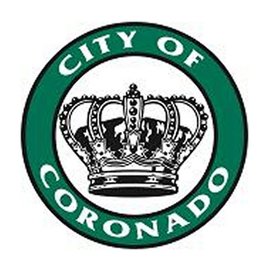The city council’s efforts solve a traffic conundrum on Third Street between the bridge and Orange Avenue suffered a setback this week. It had hoped to place an initiative on the November 2016 ballot to restrict left turns by either creating cul-de-sacs or by extending a left turn ban on A, B and C Avenues during the morning and later afternoon commutes.
To qualify for the general election this November, that environmental review would have to be completed by July. “That may not be possible to complete an environmental review in that short of time,” according to City Manager Blair King. It will have to wait until November 2018.
Based on its own preliminary engineering study, the staff observed a number of potential environmental impacts, including air quality and noise; a full environmental review will be necessary. It will take approximately nine months to complete.
Making any change that restricts traffic flow in the corridor requires a plebiscite. An earlier attempt by the city to stop left turns by erecting temporary diverters enraged residents. A citizens’ initiative ballot to remove them in 2004 passed by 68%.
“All it did was to cause people to lose time on A, B, and C Avenues and push the traffic on to D Ave,” resident John Orlowski reminded the council. Instead of restricting vehicle traffic to improve safety he suggested that the city put up “no pedestrian crossing signs,” to encourage cyclists and pedestrians to walk up to Orange Avenue to cross the street.
Councilmember Richard Bailey, who has made traffic safety the cornerstone of his mayoral campaign and first proposed restricting left turns, believes that gridlock can be avoid by extending the left turn lanes at Third and Orange. This would require cutting into the median, which may prove to an equally challenging sell. “People will have to decide what is more important,” Mayor Casey Tanaka said.
The city could hold a special election, but there was little support on the council for holding one. Special elections are expensive. Bailey, who has championed traffic safety in the corridor, suggested a citizens’ initiative that would not require an environmental review. Councilman Bill Sandke expressed interest in it at the council meeting as well.
While meeting a July deadline might prove difficult, if not impossible, the council voted to ask the staff to suggest language for ballot initiatives for both cul-de-sacs and left turn restrictions to the council to discuss at a meeting in March.
Meanwhile the council approved additional projects from the 2015-2016 budget that promise to improve safety on those streets by slowing traffic: a speed table on Fourth Street, bulb outs on Third and Fourth, and a traffic light on Fourth and Alameda, at a cost of $219,000.
At the request of Sandke, the council also approved $60,000 to install six speed advisory signs. There is currently one on Third and Pomona. Sandke noted that the signs appeared to be going a good job in slowing drivers coming off the bridge and suggested three locations for the signs: on Third and Fourth between Naval Air Station North Island and Orange Avenue, and on Alameda Blvd.
Other council actions:
The council also held a public meeting on requests to build four condo units on Isabella and four on the 200 block of B Avenue. Both are located in R-3 zones. Because population density is a concern to many, Councilwoman Carrie Downey took the time to explain why it was important for the city to “provide options for people” who wanted to live here but are not able to afford a home. It also helps the city meet its affordable housing requirements. “We need to have housing for all types of people,” she added.
It also approved subdividing an 11,340 square foot lot on the 400 block of A Avenue to allow a contractor to build two houses. With this much land, the owners could build three houses. The owner will also be allowed a 60 foot set back on one of the houses, instead of the standard residential depth of 70 feet.
The planning commission and the city council all agreed with the city staff that suspending the 70 foot rule would “encourage a more attractive plan” — it would allow them to build a square-shaped structure that would be more attractive and have less impact on the neighborhood.
The council appointed Marc D. Homan to serve out a term on the Bicycle Advisory Committee.





